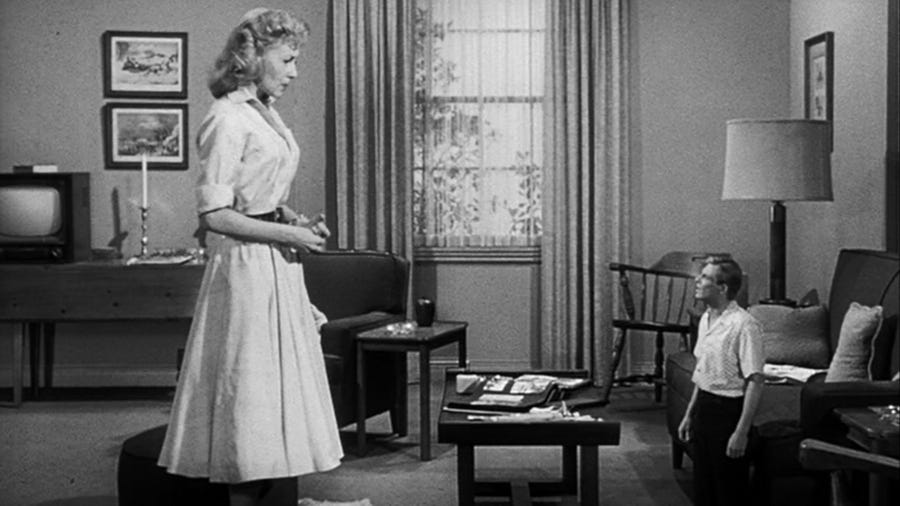Stream On! ‘The Incredible Shrinking Man,’ blowing minds since 1957
Pete Hummers looks at an early sci-fi masterpiece that transcended the genre.
In 1957, people were increasingly nervous about the US/USSR arms race. In 1954 actor Mickey Rooney made The Atomic Kid, a comedy about nuclear testing; then, reflecting shifting public perception, director Jack Arnold (Gilligan’s Island) made a horror movie about a toxic cloud and its unknown effects, The Incredible Shrinking Man.
/Streaming /Amazon /🍅83% 🍿83% /Trailer /1957 /NR
“And in that moment I knew the answer to the riddle of the infinite. I had thought in terms of Man’s own limited dimension. I had presumed upon Nature. That existence begins and ends is Man’s conception, not Nature’s.” (Scott Carey)
Richard Matheson's idea for his original novel was inspired by a scene in the film Let's Do It Again, where Ray Milland's character leaves an apartment with the wrong hat. It is much too large for Milland and sinks down around his head and ears. Matheson sold the film rights, about a man who begins to shrink after exposure to a mysterious cloud, to Universal Studios on condition that he write the screenplay.
—Scott Carey (Grant Williams) is on a boating vacation with his wife, Louise (Randy Stuart), when a strange mist envelops him (she has gone belowdecks). Six months later, he realizes that his clothes have become too large, suspects that he is shrinking, and seeks medical advice. Initially, his doctor (busy character actor William Schallert, Gunsmoke et al.) denies that Carey is shrinking. But later, the doctor confirms the shrinking through X-rays and refers him to a medical research institute. The institute determines that Carey's exposure to the mist, combined with an earlier exposure to a pesticide, rearranged his molecular structure, causing him to shrink.
(Raymond Bailey, who plays Mr. Drysdale the banker on The Beverly Hillbillies, plays the institute guy! I’m cracking up here. To be fair, this was a few years before the Hillbillies.)
Carey informs Louise that, given his predicament, she is free to leave him. Louise promises to stay, and as she does, Carey's wedding ring slips off his finger. This is smart story-telling: Louise may well stay, but Carey has no choice. The film is full of significant touches like this.
Soon come the money shots: Someone is talking to Carey, who is offscreen. When he’s done, the camera pans to Carey—who is now on a giant living-room set, making him look like a child. Subsequent shots shrink him even more, until his own family cat becomes a deadly enemy—in a horrifying battle.
These are delightful—and realistic looking—special effects, done with props and masking techniques; the result is that the audience is thoroughly entertained and ready to hear the final monologue (“The man of the future”), which is surprisingly deep for such a cool movie.
The direction, cinematography and story-telling are extremely efficient and ingenious. Everyone knew they were working on a B-movie, but they believed in The Incredible Shrinking Man. Some production decisions were undoubtedly based on the budget, but the filmmakers made it all work. You might not look at your cat in the same way going forward, though!
Sources include Wikipedia (Creative Commons Attribution-ShareAlike 4.0 License); Jack Arnold on Making the Incredible Shrinking Man
Pete Hummers is a participant in the Amazon Services LLC Associates Program, an affiliate advertising program designed to earn fees by linking Amazon.com and affiliate sites. This adds nothing to Amazon's prices. This column originally appeared on The Outer Banks Voice.




